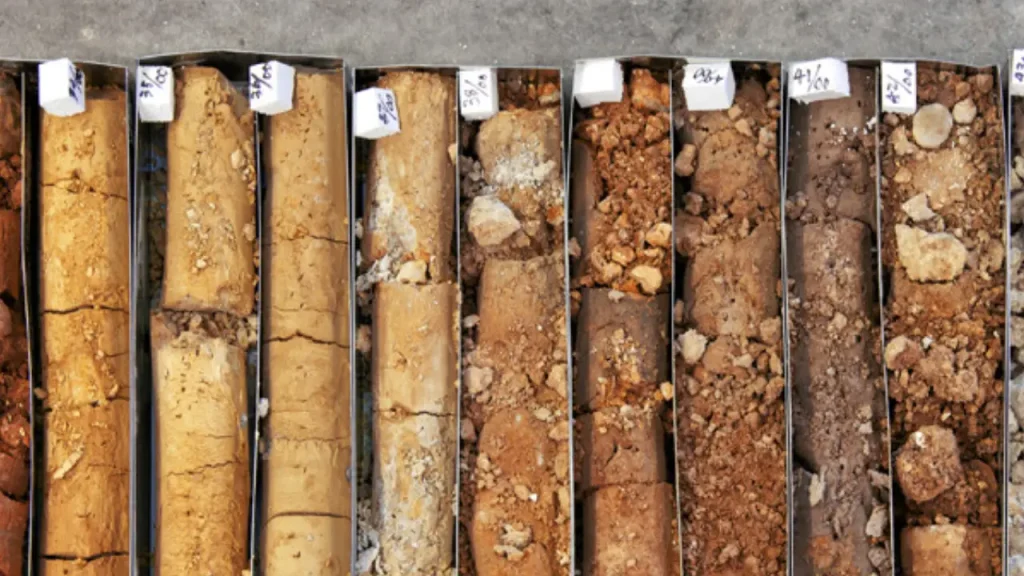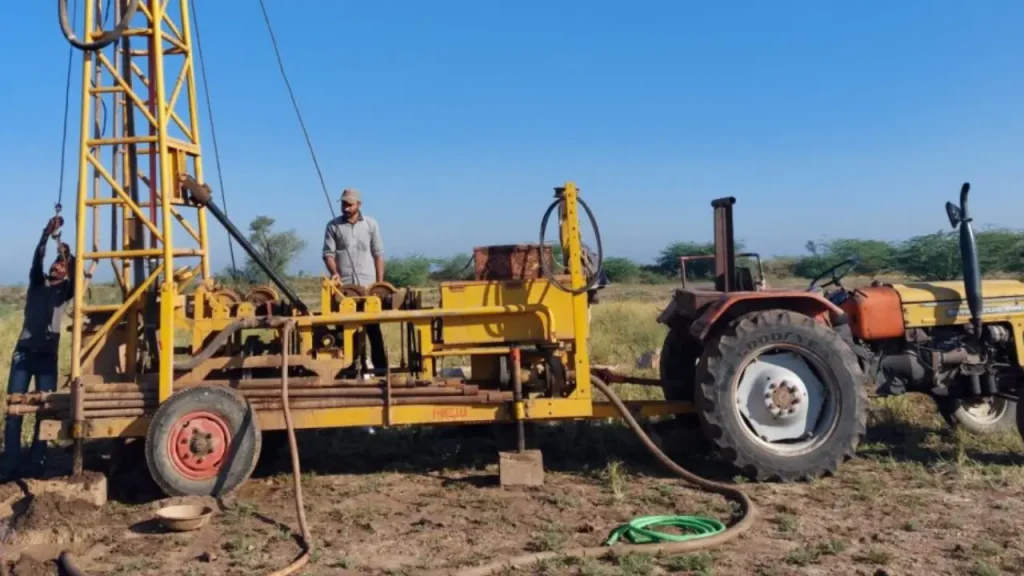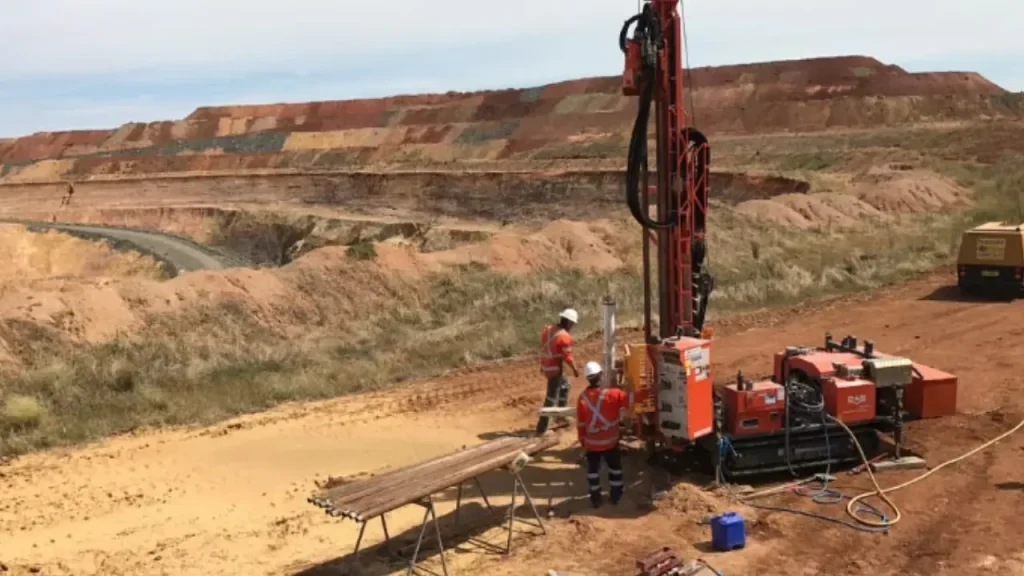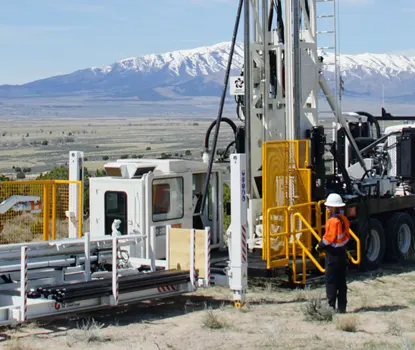Geotechnical investigation is a critical first step in any construction project, laying the groundwork for safe and stable structures. It involves exploring subsurface conditions to understand soil and rock properties. Without this vital process, unforeseen ground issues can lead to costly delays, structural failures, and safety hazards.
This ultimate guide will delve into every aspect of geotechnical site investigation. We’ll explore the essential techniques, equipment, and analysis involved in gathering crucial data about the ground beneath your project. Understanding these foundations is key to successful and resilient construction.
What is Geotechnical Investigation?

A geotechnical investigation is a critical process in civil engineering and construction that involves assessing the physical properties of soil, rock, and groundwater at a proposed construction site. Its primary purpose is to determine the ground conditions’ suitability for the intended land use or structure.
This investigation provides essential data on soil strength, bearing capacity, stability, permeability, and the presence of any potential hazards like landslides, sinkholes, or expansive soils. The findings guide engineers in designing appropriate foundations, earthworks, and overall structural systems to ensure safety, durability, and cost-effectiveness of the construction project.
What is the Purpose of a Geotechnical Site Investigation
The primary purpose of a geotechnical site investigation is to systematically assess the subsurface conditions of a proposed construction site to gather essential information for safe, economical, and sustainable design and construction. This process helps engineers understand how the ground will interact with the planned structure, identify potential risks, and inform critical engineering decisions.
- Determine Soil and Rock Properties: To identify the type, strength, density, and other engineering characteristics of the ground materials present at various depths, crucial for foundation design.
- Assess Bearing Capacity: To evaluate the maximum load the soil can safely support without excessive settlement, informing the type and size of foundations required.
- Identify Geological Hazards: To detect potential issues like unstable slopes, liquefaction susceptibility, expansive soils, sinkholes, or fault lines that could impact the project’s stability.
- Locate Groundwater Levels: To determine the depth and fluctuations of the water table, which is critical for dewatering strategies, foundation design, and assessing potential buoyancy or groundwater contamination.
- Guide Foundation Design: To provide the necessary data for selecting the most appropriate and cost-effective foundation system (e.g., shallow footings, deep piles, rafts) for the anticipated loads and site conditions.
- Optimize Construction Methods: To inform decisions on excavation techniques, earthwork requirements, slope stability measures, and potential ground improvement needs, leading to more efficient construction.
- Ensure Regulatory Compliance: To provide documentation required by building codes and regulatory bodies, demonstrating that the project design is based on sound geotechnical principles and meets safety standards.
Why Geotechnical Investigation is Important?
Geotechnical investigation is a fundamental step in any construction project, providing crucial insights into subsurface conditions. Understanding the ground beneath a structure is paramount for safety, stability, and long-term performance.
Risk Mitigation
Geotechnical investigations are vital for identifying and mitigating potential geological hazards that could compromise a construction project. This includes detecting unstable soil layers, the presence of groundwater, seismic activity risks, or the potential for landslides and subsidence. By understanding these risks beforehand, engineers can implement appropriate design modifications, ground improvement techniques, or mitigation strategies, preventing costly failures, delays, and ensuring the safety of both the structure and its occupants.
Optimized Design and Cost-Effectiveness
Accurate geotechnical data enables engineers to design foundations and structural elements that are precisely tailored to the site’s specific ground conditions. This optimization avoids both over-conservative designs, which can lead to unnecessary material and construction costs, and under-designs, which can result in structural instability and future repairs. A well-informed design based on thorough investigation leads to efficient use of resources, reduced construction time, and significant long-term cost savings.
Regulatory Compliance and Safety
Conducting a comprehensive geotechnical investigation is often a mandatory requirement for obtaining building permits and ensuring compliance with local and national building codes. These investigations provide the necessary documentation to demonstrate that the proposed construction meets safety standards and environmental regulations. Ultimately, a thorough geotechnical assessment contributes directly to the overall safety of the construction process and the finished structure, protecting workers and the public.
Long-Term Performance and Durability
The insights gained from a geotechnical investigation are crucial for predicting how the ground will interact with the structure over its entire lifespan. Understanding factors like settlement characteristics, soil-structure interaction, and potential for erosion helps in designing for long-term durability and minimizing maintenance needs. This proactive approach ensures the structure remains stable and functional for decades, safeguarding its value and preventing premature deterioration.
Types of Geotechnical Investigation

Geotechnical investigations encompass various types, each tailored to specific project needs and site conditions. These approaches ensure comprehensive data collection for informed engineering decisions.
Preliminary Investigation
A preliminary investigation, also known as a desk study or reconnaissance, is the initial phase of assessing a site’s geotechnical suitability. This involves reviewing existing geological maps, historical aerial photographs, previous construction records, and local well logs to gather readily available information about the subsurface conditions.
Surface observations and a visual walkover of the site are also conducted to identify obvious features like drainage patterns, existing structures, and potential hazards. This phase helps in formulating a detailed scope for subsequent, more invasive investigations, identifying potential issues early and guiding the selection of appropriate drilling and testing methods.
Detailed Investigation
A detailed investigation is a comprehensive and in-depth assessment conducted after the preliminary phase, once a project is more defined. This type involves extensive fieldwork, including drilling numerous boreholes, excavating test pits, and performing a wide range of in-situ tests (e.g., SPT, CPT, DMT) to collect precise subsurface data.
Numerous soil and rock samples are retrieved for thorough laboratory analysis to determine detailed engineering properties. The aim is to gather all necessary information for the final design of foundations, earthworks, and other geotechnical structures, providing a robust understanding of complex ground behavior under proposed loads.
Supplementary Investigation
A supplementary investigation is conducted when additional geotechnical data is required during or after the main detailed investigation. This often occurs due to unforeseen ground conditions encountered during construction, changes in project design, or the need to address specific issues that were not fully resolved in earlier phases.
It might involve targeted drilling, specific in-situ tests, or specialized laboratory analyses focused on particular problematic areas or design modifications. This type of investigation is crucial for addressing emergent challenges, validating assumptions, and ensuring the continued safety and stability of the project.
Geotechnical Drilling and Investigation

Geotechnical drilling is the core process of obtaining subsurface information for site investigation. It involves advancing boreholes into the earth to extract samples and perform in-situ tests, providing direct data on soil and rock properties crucial for safe and efficient construction.
Perforación rotatoria
Rotary drilling is a versatile and widely used method in geotechnical investigations, particularly for drilling through various soil and rock formations. This technique uses a rotating drill bit to cut and pulverize material at the bottom of a borehole.
Drill cuttings are then brought to the surface by circulating a drilling fluid (like water, air, or drilling mud) through the drill pipe and annulus. This method is effective for obtaining continuous core samples from rock and undisturbed samples from cohesive soils, making it suitable for deep explorations.
Perforación con barrena
Auger drilling is a common and efficient method, especially for shallower geotechnical investigations in cohesive soils and soft rock formations. It involves rotating a helical screw-like auger into the ground, which then brings the excavated material to the surface.
Both solid stem augers (for continuous sampling) and hollow stem augers (which allow for sampling and in-situ testing through the hollow core without removing the auger string) are utilized. This method is relatively fast and cost-effective, but less effective in unconsolidated or flowing sands.
Perforación por percusión
Percussion drilling, also known as cable tool drilling, involves repeatedly lifting and dropping a heavy cutting tool (a drill bit) into the borehole. The impact breaks up the soil or rock, and the loosened material is then removed using a bailer.
Este método de perforación is particularly effective for drilling through hard rock, gravel, and boulders where other methods might struggle. While slower than rotary drilling, it can produce very accurate samples and is often used for groundwater monitoring well installations.
Direct Push (DP) or Geoprobe Drilling
Direct Push (DP) or Geoprobe drilling involves hydraulically pushing small-diameter tools and sensors directly into the ground without rotation or removal of cuttings. This method is very efficient for rapid subsurface profiling, environmental investigations, and obtaining soil and groundwater samples at shallow to moderate depths in unconsolidated soils. It minimizes soil disturbance and generates minimal waste, making it a “cleaner” alternative for many site assessments.
Perforación con corona
Core drilling is a specific type of rotary drilling designed to extract intact cylindrical samples (cores) of rock or very hard soil. It uses a diamond-impregnated or carbide-tipped core barrel that cuts an annular ring into the formation, leaving a solid core inside. This method provides the highest quality samples for detailed laboratory analysis of rock properties, including strength, discontinuity, and permeability, crucial for foundation design in bedrock.
Drilling Rig for Geotechnical Investigation
Drilling rigs are the workhorses of geotechnical investigation, enabling access to subsurface materials for sampling and in-situ testing. Their selection is critical, depending on site conditions, required drilling depth, and the type of geological formations encountered.
Truck-Mounted Drill Rigs
Truck-mounted drill rigs are highly versatile and widely used for geotechnical investigations due to their mobility and power. These rigs are mounted directly onto a truck chassis, allowing for rapid deployment to various sites, including those with relatively good road access. They are capable of performing a wide range of drilling techniques, such as auger drilling, rotary drilling, and coring, making them suitable for diverse soil and rock conditions. Their self-contained nature and ability to carry necessary tools and water contribute to efficient fieldwork.
Track-Mounted Drill Rigs
Track-mounted drill rigs, also known as crawler rigs, are designed for superior maneuverability and stability on challenging terrains. Equipped with rubber or steel tracks, these rigs can access remote, uneven, or soft ground conditions that wheeled vehicles cannot. Their low ground pressure minimizes disturbance to sensitive sites, while their robust construction allows for deep drilling and handling difficult geological formations. They are commonly used in mountainous regions, wetlands, or sites with limited access.
All-Terrain Vehicle (ATV) Mounted Drill Rigs
ATV-mounted drill rigs are compact and lightweight, specifically designed for highly restricted or environmentally sensitive access areas. These rigs can be transported by helicopter or disassembled for manual portaging, making them ideal for remote wilderness sites, dense forests, or steep slopes. Despite their smaller size, they are capable of various drilling methods, including auger and core drilling, providing essential subsurface information where larger rigs are impractical.
Man-Portable Drill Rigs
Man-portable drill rigs are the most compact and lightweight option, designed to be disassembled into small components that can be carried by hand. This makes them indispensable for investigations in extremely remote, inaccessible locations, or environmentally protected areas where even ATVs cannot operate. While their drilling depth and power are limited compared to larger rigs, they are crucial for obtaining critical samples and performing shallow in-situ tests in challenging terrains.
Heli-Portable Drill Rigs
Heli-portable drill rigs are specialized rigs designed for transportation by helicopter, enabling access to the most remote and challenging sites where no other ground-based access is possible. These rigs are modular, breaking down into components that fit helicopter cargo slings. They offer significant drilling capabilities, including deep coring in rock, making them essential for large-scale infrastructure projects in mountainous or undeveloped regions where traditional access is impossible.
Steps in Geotechnical Investigation
A geotechnical investigation follows a systematic process to thoroughly assess subsurface conditions, ensuring comprehensive data collection and analysis for sound engineering decisions. Each step builds upon the last, leading to a robust understanding of the site.
Step 1: Planning and Scoping
Effective geotechnical investigations begin with meticulous planning and scoping. This initial phase involves clearly defining the objectives of the investigation, which are tailored to the specific project requirements, such as foundation design, slope stability analysis, or groundwater control. Engineers meticulously determine the necessary extent of testing, considering factors like the site’s size, its complexity, the proposed structural loads and tolerances, and any relevant regulatory or environmental constraints.
Furthermore, this stage includes crucial logistical considerations. Planning addresses site access challenges, particularly for remote or restricted locations that might necessitate specialized, portable drilling equipment. Safety protocols are also prioritized, involving assessments for potential hazards like proximity to existing utilities or the presence of hazardous materials, ensuring the well-being of the investigation team.
Step 2: Site Assessment
The second step involves an initial site reconnaissance, a critical preliminary evaluation to identify key geological and environmental factors. Geologists and engineers conduct thorough surface inspections, observing features such as visible soil outcrops, existing drainage patterns, and vegetation types, which can provide valuable clues about the subsurface conditions. These preliminary observations often hint at the presence of specific soil characteristics, such as weak or expansive soils, before any invasive testing begins.
During this phase, potential geological hazards are also identified early in the process. This includes assessing risks from seismic activity by mapping fault lines and liquefaction zones, testing for soil contamination that could impact construction or require remediation, and evaluating the risk of landslides in hilly or mountainous terrain. Field surveys at this stage are often augmented by reviewing historical data, analyzing aerial imagery, and utilizing geospatial mapping for a holistic understanding of the site’s history and current state.
Step 3: Field Work
Fieldwork forms the backbone of geotechnical investigations, involving various techniques to collect direct subsurface data. This primarily includes drilling boreholes at strategic locations and depths, which are determined by the site’s size and specific project requirements. From these boreholes, soil and rock samples are meticulously extracted at different depths, providing physical specimens for detailed laboratory analysis.
In-situ testing is also performed on-site to gather real-time data on soil behavior under actual conditions. Common methods include the Standard Penetration Test (SPT), which measures soil resistance to penetration, offering insights into density and bearing capacity. The Cone Penetration Test (CPT) assesses soil strength and stratigraphy by measuring resistance during cone penetration. Other tests like Pressuremeter and Vane Shear Tests evaluate stress-strain relationships and shear strength. Adherence to standards like ASTM D1586 (SPT) and ISO 22476 (CPT) ensures the reliability of these field data.
Step 4: Laboratory Testing
After fieldwork, the collected soil and rock samples undergo rigorous laboratory analysis to determine their detailed engineering properties. This phase is crucial for understanding how the materials will behave under the stresses of the proposed construction. Common tests include Atterberg Limits, which define soil plasticity and help classify its type (e.g., clay, silt, sand).
Shear strength tests are conducted to assess the soil’s resistance to shearing forces, a critical parameter for foundation design and slope stability. Permeability tests measure the rate at which water flows through soils, providing essential data for drainage design and dewatering strategies. Consolidation tests are performed to estimate the potential settlement of soils under sustained loads. The comprehensive results from these laboratory analyses are fundamental for developing accurate geotechnical models and predictions.
Step 5: Data Analysis and Interpretation
Synthesizing all collected field and laboratory data is a critical step in developing a coherent and comprehensive understanding of the site’s geotechnical conditions. Engineers employ specialized software to model subsurface behavior, allowing them to predict how the ground will perform under varying load conditions imposed by the proposed structure. During this phase, key geotechnical parameters such as bearing capacity, expected settlement, and slope stability are meticulously evaluated.
This stage involves a thorough integration of all available information. Field observations, the results from in-situ tests, detailed laboratory analyses, and relevant historical records are combined to generate comprehensive site profiles. This integrated approach allows for the development of accurate risk assessments, identifying potential hazards and informing the subsequent design recommendations to mitigate these risks effectively.
Step 6: Reporting and Recommendations
The geotechnical investigation culminates in a detailed geotechnical report, which serves as the foundational document for all subsequent design and construction decisions. This comprehensive report systematically presents all findings from the investigation. It includes summarized data on soil and rock properties at different depths, detailed groundwater levels, and a thorough description of overall site conditions.
Crucially, the report provides actionable recommendations for the project. This guidance includes specific advice on foundation design (e.g., shallow, deep, raft), necessary slope stabilization measures, and essential drainage requirements. It also incorporates comprehensive risk assessments, identifying any potential geological hazards and outlining concrete mitigation strategies. To ensure credibility and acceptance by stakeholders and regulatory bodies, the report must strictly adhere to relevant regional and international standards, such as Eurocode 7 or ASTM guidelines.
Drilling Tools para investigación geotécnica
La perforación geotécnica se basa en una variedad de herramientas especializadas para penetrar eficazmente en diferentes condiciones del terreno, recuperar muestras y realizar ensayos in situ. La selección de estas herramientas es crucial para obtener datos precisos y garantizar la eficacia de la investigación.
Brocas
Las brocas están en la vanguardia del proceso de perforación, diseñadas para cortar o pulverizar el suelo y las formaciones rocosas. Su tipo varía considerablemente en función del material que se esté perforando. Para suelos blandos, son habituales las brocas de cola de pez o de arrastre. Para formaciones más duras, se utilizan brocas de cono de rodillo con conos giratorios o brocas impregnadas de diamante para perforar roca dura. La elección de la broca influye directamente en la velocidad de perforación, la calidad de las muestras y la capacidad de penetrar eficazmente en capas geológicas difíciles.
Sinfines
Las barrenas son herramientas de forma helicoidal que se utilizan principalmente para perforar en suelos cohesivos blandos a semirrígidos, arenas y algunas rocas meteorizadas. Las barrenas de vástago macizo sacan los recortes a la superficie a lo largo de sus tramos, proporcionando muestras alteradas. Las barrenas de vástago hueco, por su parte, permiten la toma continua de muestras o la realización de ensayos in situ a través de su núcleo hueco sin necesidad de retirar toda la sarta de barrenas, lo que las hace muy eficaces para las investigaciones medioambientales y geotécnicas poco profundas.
Barriles con núcleo
Los barriles sacatestigos son herramientas especializadas que se utilizan en la perforación rotatoria para obtener muestras cilíndricas intactas (testigos) de rocas o suelos muy rígidos. Consisten en un barril con una broca de corte en el fondo, normalmente impregnada de diamantes. Al girar, la broca corta un anillo anular que permite el paso del testigo al interior del tubo. Existen varios tipos, como los sacatestigos de tubo único, de tubo doble y de tubo triple, que se eligen en función de la calidad de la muestra deseada y de la friabilidad del material extraído.
Muestreadores
Los tomamuestras son herramientas fundamentales para obtener muestras de suelos y rocas de perforaciones para su análisis en laboratorio. Los tipos más comunes son los tomamuestras de cuchara partida (utilizados con SPT para muestras alteradas), los tomamuestras de tubo Shelby (para obtener muestras inalteradas de suelos cohesivos) y los tomamuestras de pistón (para muestras inalteradas de alta calidad, especialmente en arcillas blandas). La elección del tomamuestras depende del tipo de suelo, de la profundidad y de las pruebas de laboratorio específicas que se vayan a realizar, ya que la alteración de las muestras debe reducirse al mínimo.
Herramientas de ensayo in situ
Se utiliza una serie de herramientas especializadas para realizar ensayos in situ directamente dentro del pozo o mediante presión en el suelo. Entre ellas se incluyen el penetrómetro de cono (para ensayos CPT y CPTu), el aparato de ensayo de cizalladura con paletas (para medir la resistencia a la cizalladura no drenada de las arcillas) y el presiómetro (para determinar las propiedades de tensión-deformación). Estas herramientas proporcionan datos en tiempo real sobre las propiedades del suelo en condiciones reales, complementando el análisis de laboratorio de las muestras recuperadas y ofreciendo una visión inmediata del comportamiento del subsuelo.
Técnicas avanzadas de investigación geotécnica
Más allá de los métodos convencionales, las técnicas avanzadas de investigación geotécnica proporcionan datos más detallados y matizados, cruciales para proyectos complejos o condiciones del terreno difíciles. Estos enfoques de vanguardia mejoran la precisión, reducen la invasividad y ofrecen información en tiempo real sobre el comportamiento del subsuelo, lo que permite realizar diseños más sólidos y optimizados.
- Métodos geofísicos: Estas técnicas no invasivas (por ejemplo, refracción sísmica, resistividad eléctrica, radar de penetración en el suelo) utilizan principios físicos para obtener imágenes de las estructuras del subsuelo. Ayudan a identificar la estratigrafía del suelo, localizar el lecho rocoso, detectar aguas subterráneas y cartografiar los servicios públicos enterrados sin necesidad de perforaciones extensas, ofreciendo una amplia cobertura del emplazamiento de forma eficaz.
- Prueba de penetración piezocónica (CPTu): El CPTu, una evolución del CPT, mide simultáneamente la resistencia de la punta, la fricción del manguito y la presión del agua de poros. Esto proporciona datos continuos muy detallados sobre el tipo de suelo, su resistencia, densidad y características de drenaje, cruciales para evaluar el potencial de licuefacción y asentamiento.
- Prueba del dilatómetro (DMT): El DMT es un ensayo in situ que mide la rigidez del suelo y los parámetros de resistencia mediante la expansión de una membrana en el suelo. Proporciona estimaciones fiables del historial de tensiones, el coeficiente de sobreconsolidación y las características de asentamiento, especialmente útiles para arcillas y limos blandos.
- Pruebas sísmicas de fondo de pozo: Este método consiste en generar ondas sísmicas en la superficie y medir su tiempo de viaje hasta los receptores de un pozo. Determina con precisión las velocidades de las ondas de corte y las propiedades dinámicas del suelo, que son esenciales para el diseño sísmico y el análisis de licuefacción de las estructuras.
- Teledetección y estudios con vehículos aéreos no tripulados (drones): La utilización de drones e imágenes por satélite permite realizar cartografía topográfica a gran escala, fotogrametría precisa y análisis multiespectral. Estas técnicas proporcionan modelos de elevación detallados, controlan la deformación del terreno e identifican características geológicas en zonas extensas o inaccesibles de forma eficiente.
- Ensayos avanzados de suelos en laboratorio: Más allá de las pruebas estándar, los métodos de laboratorio avanzados (por ejemplo, compresión triaxial, columna resonante) determinan el comportamiento complejo del suelo. Proporcionan relaciones tensión-deformación, resistencia a la licuefacción y propiedades dinámicas en condiciones de campo simuladas, vitales para el diseño de infraestructuras críticas.
Coste de la investigación geotécnica
El coste de una investigación geotécnica puede variar significativamente, influido por numerosos factores que dictan el alcance, la complejidad y la duración del trabajo. Aunque representa una inversión inicial, una investigación exhaustiva suele suponer un ahorro a largo plazo al evitar costosos errores de diseño, retrasos en la construcción y problemas imprevistos.
- Escala y complejidad del proyecto: Los proyectos de mayor envergadura con cargas más pesadas, estructuras complejas o condiciones geológicas difíciles (por ejemplo, pendientes pronunciadas, cimientos profundos, zonas sísmicas) requieren investigaciones más amplias y complejas, lo que eleva los costes.
- Accesibilidad del sitio: Los lugares remotos, de difícil acceso o peligrosos aumentan los costes logísticos debido a los equipos especializados, los tiempos de viaje más largos y las medidas de seguridad adicionales necesarias para el personal y la maquinaria.
- Profundidad y número de sondeos requeridos: Las investigaciones más profundas y un mayor número de perforaciones o pozos de prueba aumentan el tiempo de perforación, la mano de obra y el uso de equipos, lo que repercute directamente en el coste global.
- Tipo y número de pruebas: Las pruebas específicas in situ (por ejemplo, SPT, CPT, DMT) y los análisis de laboratorio (por ejemplo, límites de Atterberg, resistencia al corte, consolidación) que se realicen influirán significativamente en el coste, ya que algunas pruebas requieren más mano de obra o equipos especializados.
- Condiciones geológicas: Los emplazamientos con condiciones del terreno muy variables o difíciles, como terrenos kársticos, rocas, suelos contaminados o niveles elevados de aguas subterráneas, pueden requerir técnicas de perforación más avanzadas, pruebas adicionales y períodos de investigación más largos, lo que se traduce en costes más elevados.
- Requisitos de información y experiencia: El nivel de detalle exigido en el informe geotécnico, incluida la modelización avanzada o las recomendaciones especializadas, puede afectar al coste, al igual que la antigüedad y la experiencia de los ingenieros geotécnicos implicados.
Conclusión
Una investigación geotécnica es crucial para comprender las condiciones del subsuelo, mitigar los riesgos y garantizar una construcción segura y estable. Esta guía destaca su importancia a la hora de revelar las propiedades del suelo, los niveles de agua subterránea y los peligros potenciales, todos ellos vitales para tomar decisiones de ingeniería informadas y para el éxito del proyecto.
Una investigación minuciosa del emplazamiento minimiza los problemas imprevistos, lo que permite optimizar los diseños y evitar costosos fallos estructurales. Es una inversión que salvaguarda tanto la integridad del proyecto como el rendimiento a largo plazo, sentando las bases para un desarrollo fiable de las infraestructuras.
Para todas sus necesidades de perforación geotécnica, consiga herramientas de perforación geotécnica al por mayor de Ame Drill.


